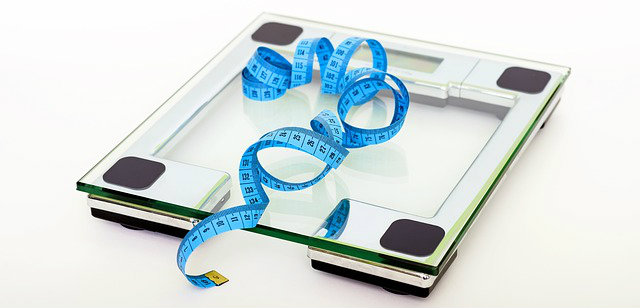
Right now, you’re being lied to.
The magazines are lying, your friends are lying, and the morning talk shows are lying. They’re telling you where fitness comes from — and they’re dead wrong.
It’s time to set the record straight. We’ll do it for the sake of our friends, our loved ones, and our own health. We’ll do it because fitness can only be enjoyed when the truth is known. We’ll do it in the name of sanity.
Here are the three biggest lies you’re being told. See them for the folklore they are, and follow my advice instead. Do it faithfully, and fitness will be yours.

Lie #1: The Scale
Perhaps the most insidious of the half-truths propagated by fashion, fitness, and your friends — that your scale weight indicates your health.
While this may be true in some limited circumstances (such as genuine obesity), relying on your scale weight to determine your health is like trying to determine your mile run time by measuring the circumference of your calves — it simply doesn’t tell the whole story.
Rather than worry about your scale weight, focus on your body composition. This is a much more comprehensive measure of your health, one that takes into account the underlying components of your weight: how much of your body is fat, how much is muscle tissue, and how much is bone, water, hair, and the like.

By focusing on body composition and working to reduce your proportion of stored fat to muscle, you’ll look leaner, you’ll be fitter, and you can safely ignore the scale. Here’s the rub — you may find you weigh more as you develop favorable body composition. You may even exceed your physician’s body mass index chart. Pay this no mind. When your diet and exercise are in order, muscle begins to replace fat, and your density actually increases, leading to a higher scale weight despite improved biomarkers.
This is where many fitness adherents, especially women, go off the rails. They dial in diet and exercise, they lift and run, and they find their scale weight stays the same (or increases), leading them to believe they’re not making progress.
This couldn’t be further from the truth. Clothing sizes may decrease as body fat vanishes, but the scale doesn’t necessarily follow suit — and once you’re healthy, it never will.
The Lesson: Stop relying on the scale. Get a caliper test from a qualified trainer. Do a DEXA scan. Rely on your tape measure. Just don’t believe a thing the scale tells you, and stop trying to please the weight gods — they’re the wrong deities, and they live in the wrong church.
Lie #2: The Comfortable Workout
There is an entire industry built on this lie — the idea that you can work out at moderate intensity, repeating a single stimulus, and achieve results.
This is the lie of the casual daily walk; of the long, slow run; of eight-minute abs. This is the lie of every device you see marketed at 3:00am. It is the lie of three-pound dumbbells and Shake Weights. It is the lie of routine.
Improving your fitness requires difficulty. You must run faster than before, you must lift more than before, you must do more work in less time than before. This fact follows from a fundamental principle of exercise science known as SAID, or specific adaptation to imposed demands.

Stated differently, SAID says you’ll get precisely the physical adaptation your workout demands of your body — and no more. Jogging three miles per day at a pace of ten minutes per mile will result in a body capable of precisely that, three miles in thirty minutes. It will result in a body-fat percentage, muscle mass, and aerobic fitness consistent with that pace. Once that adaptation is achieved through repetition, there will be no further gains.
And so you must push. If you want to get fitter, you must go faster. You must lift more. You must include variance in your “routine,” finding new ways to impose demand on your body. You must run short distances quickly. You must lift weights that push your capabilities. Above all, you must do things you don’t normally do, varying activities, rep schemes, loads, and distances to create new adaptations.
The lesson: There is no such thing as a comfortable workout that works. If you want results, you must seek the discomfort of new demands — and beware of anyone who persuades you otherwise (especially if they have something to sell).
Lie #3: A Calorie Is a Calorie
Another lie with commercial underpinnings. We’ve been sold on the idea that we can eat whatever we like (and favorable health and fitness will result) so long as we stay within our predetermined calorie count.
This idea is the driver behind dietary abominations such as Diet Coke, Snackwell’s low-calorie cookies, and Breyers fat-free ice cream (low calorie foods with nonetheless horrific health consequences) — and it’s nonsense.
A calorie is not a calorie.
A calorie from chicken breast has a fundamentally different hormonal effect in our bodies than a calorie from M&Ms. A calorie from yogurt has a different hormonal effect than a calorie from avocado, and a calorie delivered via fruit juice precipitates a different hormonal effect than a calorie delivered via pistachios. These differences in hormonal effect render calorie count nearly meaningless.

In simplified form, here’s how it actually works:
- There are three macronutrients: protein, fat, and carbohydrate. Each plays an essential role in hormonal balance and the subsequent regulation of blood sugar, and you need all of them. In my examples above, chicken is a protein source; M&Ms, yogurt, and fruit are carbohydrates; and avocados and pistachios are fats.
- When you consume carbohydrates, your blood sugar rises. This provides energy for immediate use, with sugar being used first at local muscle sites and within the brain, with any remaining sugar then stored as body fat. Storage is accomplished via insulin, a hormone secreted by the pancreas.
- When you consume protein, stored body fat is mobilized to provide energy. This is accomplished via glucagon, another hormone secreted by the pancreas. You can think glucagon as a counterbalance to the insulin storage mechanism.
- When you consume fat, you slow digestion and increase satiety (the feeling of being full). In practice, fat consumption slows the rise of blood sugar in your bloodstream caused by eating carbohydrates, thereby slowing insulin release and limiting fat storage while simultaneously signaling that you should stop eating.
Generally, we want storage (via the carbohydrate/insulin mechanism) and mobilization (via the protein/glucagon mechanism) to be balanced. Too much storage, and you get fat. Too much mobilization, and you won’t have the energy reserves necessary to sustain daily activities. Further, we want to take in significant enough amounts of fat to curb our appetite and slow the entry of sugar into the bloodstream.
Notice that none of these effects are calorie dependent. Rather, they are determined by hormones.
It follows that it is not excess calories that make us fat, but rather a preponderance of storage resulting from repeated and unchecked rises in blood sugar. Therefore, the source of each calorie is profoundly important in determining body composition — and a calorie is (never, ever) just a calorie.
The Lesson: Forget calorie counting, and learn to balance your macronutrient intake, consuming proteins, fats, and carbohydrates at every meal. Aim for consistent protein consumption and eat low-glycemic index carbohydrates (such as fibrous fruits, vegetables, and leafy greens), and if you’re consistently hungry, increase your fat intake.
Three Truths of Fitness
Following the three lies of fitness, here are your countervailing truths. Follow them, and fitness will be yours:
- Ignore your scale. In fact, throw it away. You should worry only about body composition (your ratio of body fat to lean tissue). Improve that ratio, and fitness will follow. Of course, understand that the ideal body-fat level is not zero, and pursuing that end can be as bad for your health as worrying about your scale weight.
- Avoid comfortable workouts. Effective workouts are not easy. You will need to vary your distances, loads, and times. You will need to push yourself. You will need to lift, sprint, climb, and run long distances to create new adaptations, and you’ll need to avoid routine at all costs.
- Pay attention to your macronutrient intake. Health, fitness, and favorable body composition result from a balance in your storage and mobilization hormones, borne of a blood sugar level that is low, level, and steady. This can be achieved by eating high-quality fats, proteins, and carbohydrates at every meal. Forget you ever heard of a calorie.



































